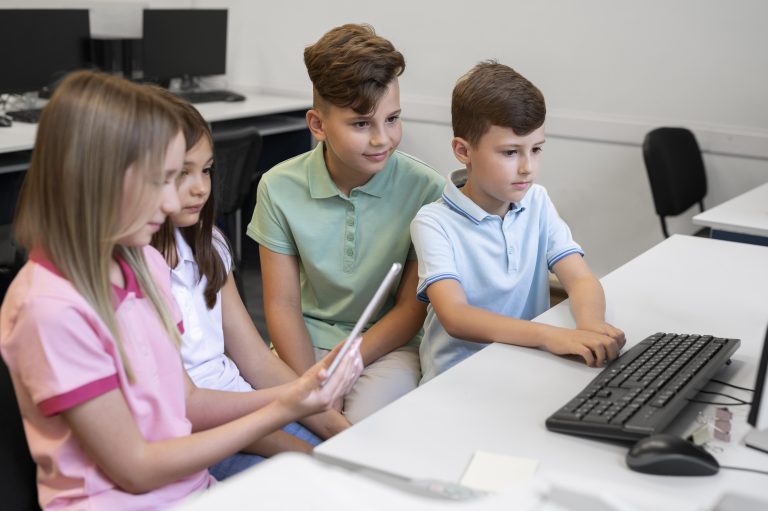
As we navigate the digital age, it’s clear that video conferencing tools have taken center stage in our communication processes. But have you ever considered the immense potential of these tools in managing language processing disorders? I’m here to guide you through this remarkable journey.
Language Processing Disorder (LPD) is a learning disability that manifests itself in written and oral deficits regarding language comprehension. LPD can lead to issues with transferring information to the temporal lobe, morphing input into clear mental images, and understanding input. LPD can also come with a plethora of comorbidities. According to the search results, here are some statistics on the prevalence of Language Processing Disorder in children:
- Experts believe that about 5% of American children suffer from some kind of language disorder. In fact, over a million children today receive special assistance for such disorders[1].
- Experts estimate that up to 5 percent of children in the United States have some type of language disorder, though many remain undiagnosed, and currently more than 1 million children are receiving special education specific to language disorders in the U.S. public school system[2].
- Nearly 1 in 12 (7.7 percent) U.S. children ages 3-17 has had a disorder related to voice, speech, language, or swallowing in the past 12 months. Among children ages 3-17 who have a voice, speech, language, or swallowing disorder, 3.3 percent have a language disorder that lasted for a week or longer during the past 12 months[3].
- Boys have a 1.5-6.3x higher chance of developing a communication disorder in their lifetime. Currently, more than 1 million children are receiving special education for language disorders in the U.S. public school system[4].
- Approximately 5% of school-age children have some type of auditory processing disorder (APD), which is often mistaken for LPD because the symptoms are often similar[5].
- An estimated 5 percent of children in the United States have some type of language disorder, though many remain undiagnosed[6].
Overall, the search results suggest that around 5% of American children have some type of language disorder, including Language Processing Disorder.
Zooming into Success
Take Zoom, for example. It’s a platform that most of us are well-acquainted with. But for children grappling with language processing disorders, it’s nothing short of a lifeline. Through Zoom, therapists can deliver one-on-one instruction, while the screen sharing feature makes it possible for interactive activities.
In my recent chat with a renowned speech therapist, she shared her Zoom success story. She used its features to create an engaging environment for her student struggling with dyslexia. By using the whiteboard and annotation tools, she transformed her sessions into a playground of words and sounds, which made learning not only effective but also fun.
Microsoft Teams – The Underdog
Microsoft Teams, though often overshadowed by Zoom, shines bright when it comes to inclusivity. Its immersive reader tool, which reads out text, has been a game-changer for students with language processing disorders. It provides a multi-sensory experience that can enhance understanding and retention.
In a hypothetical scenario, consider a child with auditory processing disorder. This student may struggle to comprehend verbal instructions during a virtual session. But with Microsoft Teams, these verbal instructions can be converted into written text, facilitating better understanding.
However, if you’re looking for an all-in-one solution, O-Connect takes the cake. It’s an underappreciated platform that packs a punch when it comes to features beneficial for managing language processing disorders. In my personal experience, I found O-Connect’s translation tool particularly impressive.
Let’s imagine a child struggling with language processing, but English isn’t their first language. O-Connect’s translation tool can translate instructions into their native language, making learning more accessible and personalized. Isn’t that amazing?
The Choice is Yours
Each tool has its strengths, but the best one for you depends on your specific needs. If interactivity is your priority, Zoom is your best bet. For inclusivity, consider Microsoft Teams. But if you need an all-in-one solution, O-Connect is the way to go.
In conclusion, video conferencing tools aren’t just about connecting people; they have the potential to change lives, especially for those grappling with language processing disorders. They can turn challenging therapy sessions into engaging, interactive, and personalized learning experiences.
The joy that lights up their face when they comprehend a new word, the self-assurance they gain from learning at their own speed, and the channels of communication that suddenly swing wide open.
It requires the suitable approaches, a hint of creativity, and a deep comprehension of the child’s needs. Hence, irrespective of your role as a therapist, educator, or guardian, please invest some time in exploring these materials and discovering ways to personalize them for assisting your child in surpassing their challenges with language processing.
Ultimately, it’s not about determining the superior platform. It’s about employing these tools to bring out the finest qualities in every child. So, let’s activate our webcams, access our sessions, and commence making a positive impact, one word at a time.
The future of language therapy is here, and it is digital, inclusive, and brimming with potential. Are you prepared to participate?
Citations:
[1] https://www.ldrfa.org/what-is-language-processing-disorder/
[2] https://www.additudemag.com/language-processing-disorders-recognizing-symptoms/
[3] https://www.nidcd.nih.gov/health/statistics/quick-statistics-voice-speech-language
[4] https://my.vanderbilt.edu/speds2430/2020-topics/language-processing-disorder/
[5] https://auditorycenter.com/what-is-auditory-processing-disorder/prevalence-of-apd/
[6] https://cogx.info/cognition-learning/learning-differences/language-processing-disorders/